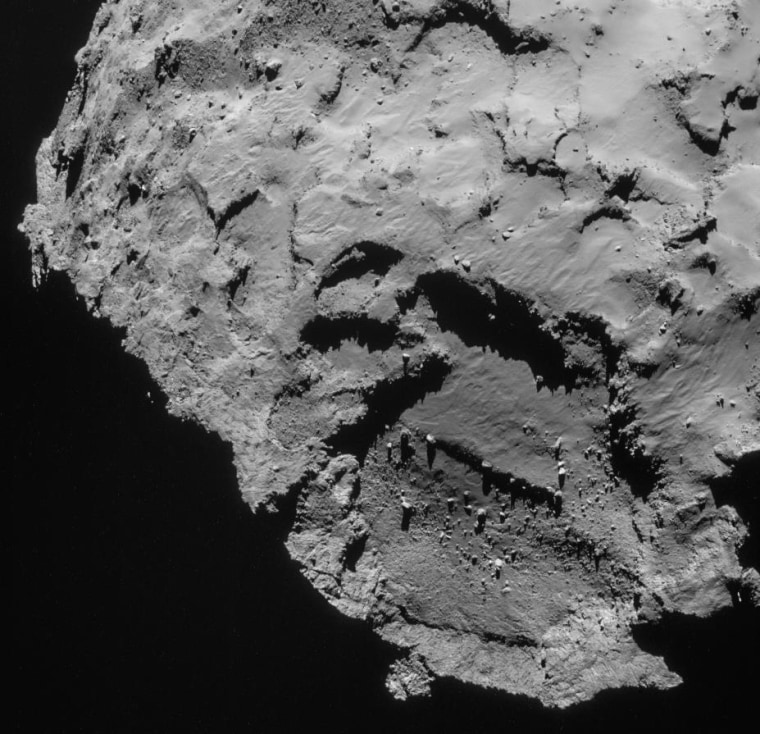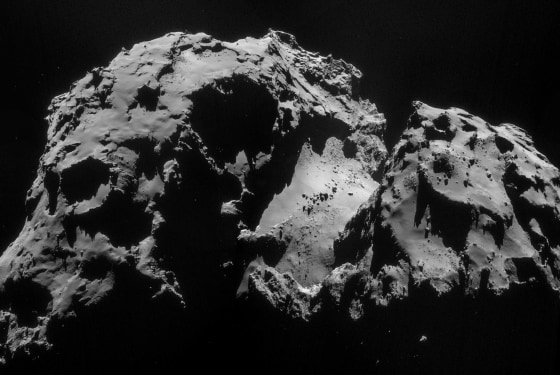The European Space Agency says it will attempt to land the first spacecraft on a comet on Nov. 12. The maneuver is due to take about seven hours, starting from the moment its unmanned probe Rosetta releases the 100-kilogram (220-pound) Philae lander at 3:35 a.m. ET. Because of the 28 minutes it takes the signal to travel back to Earth, confirmation of a successful landing on Comet 67P/Churyumov-Gerasimenko won't arrive until about shortly after 11 a.m. ET that day.
In a statement issued Friday, ESA said it has a backup plan in case there's a problem with the preferred landing site, which is on the "head" of a comet that some have compared to a rubber ducky. Scientists hope Rosetta's decade-long, $1.7 billion mission will help them learn more about the origin and evolution of comets and other solar system objects.

